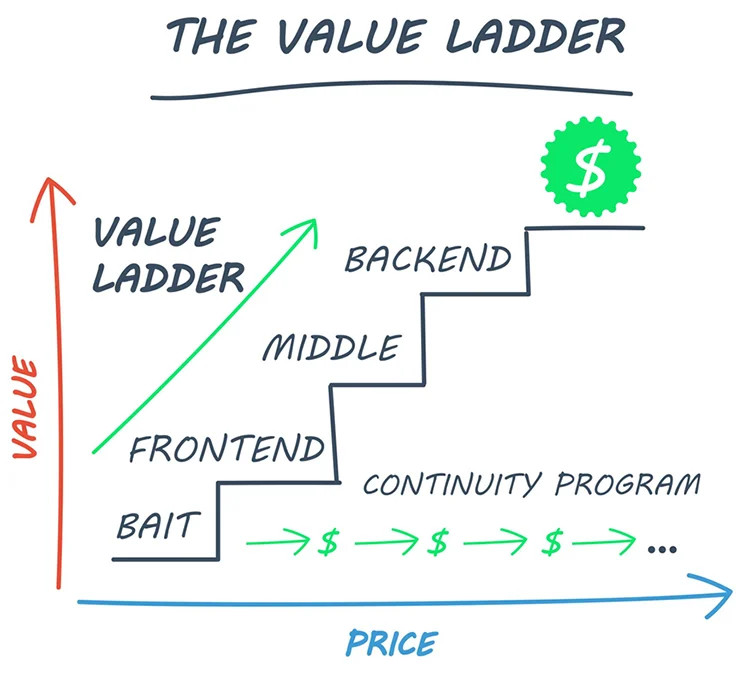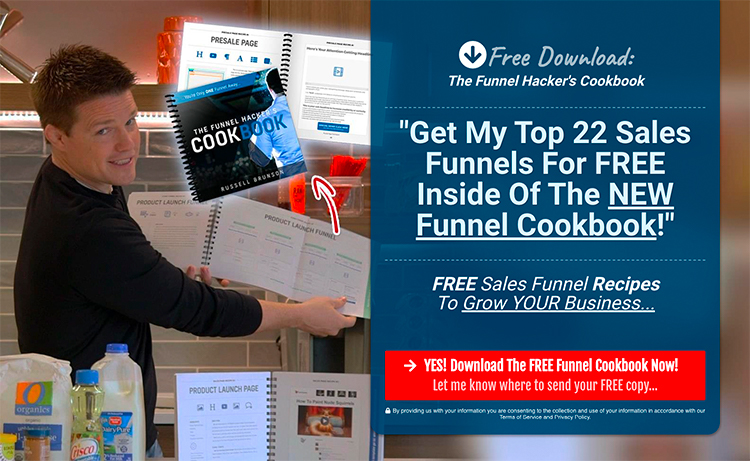Free
Customer Acquisition Cost – Everything You Need To Know
If you want to build a successful, long-lasting business, you need to pay attention to customer acquisition cost. It’s a crucial metric that many entrepreneurs misunderstand. In this article, we’ll unravel the mystery and give you all the information you need.
First, let’s define customer acquisition cost (CAC)
It’s a business metric that shows how much, on average, it costs to acquire a new customer. It’s calculated by dividing the total cost of marketing and sales by the number of new customers acquired.
For example, if you spend $1,000 on marketing and sales and gain 100 new customers, your CAC is $10. Simple math, right?
Now, let’s move on to customer lifetime value (CLV)
This metric reveals how much revenue, on average, a single customer brings in over their entire lifetime. There are different ways to calculate CLV depending on your business model, but the basic formula is multiplying the average annual revenue per customer by the average length of a customer relationship.
For instance, if the average customer spends $50 per year and stays with your company for three years, their CLV is $150. Alternatively, you can multiply the average order value by the average number of purchases per year per customer and then multiply that by the average length of a customer relationship. Using this formula, a customer with an average order value of $10, making three purchases per year, and staying for three years has a CLV of $90.
If you have a SaaS business, things get a bit more complicated, but bear with us. This formula uses the average revenue per account (ARPA) divided by the revenue churn rate to calculate CLV. So, if your monthly ARPA is $1,000 and the revenue churn rate is 15%, your CLV would be $6,666. Alternatively, you can use the advanced formula, which also considers the gross margin percentage. With a monthly ARPA of $1,000, a gross margin of 40%, and a revenue churn rate of 15%, your CLV becomes $2,666.
Remember, the introduction of the gross margin variable greatly impacts CLV, making the advanced formula more accurate.
Now, let’s talk about the relationship between CAC and CLV
Customer lifetime value is the determining factor when it comes to customer acquisition cost. It’s essential that CAC doesn’t exceed CLV; in fact, it must be significantly lower if you want to build a profitable and sustainable business.
There is an exception for VC-funded businesses that prioritize growth over profitability. For the rest of us, though, it’s important to be mindful of the math from the beginning. While reducing CAC is essential, focusing solely on that can be misguided.
According to our co-founder Russel Brunson, “Whoever can spend the most to acquire a customer wins.” This idea, inspired by Dan Kennedy, shapes our entrepreneurial journey. The math is crucial in direct marketing, and bad economics can ruin even the best funnel.
Those who figure out how to spend the most to acquire customers gain a competitive edge by buying speed, scale, and sustainability. The aggressive approach to customer acquisition also deters competition.
Now that you understand the importance of customer acquisition cost and customer lifetime value, you’re equipped to create a thriving business. Don’t be afraid to invest in acquiring customers; it may be the key to your success.
Ready to outspend your competitors and dominate customer acquisition? It’s simpler than you think. By increasing your customer lifetime value, you can unlock the ability to invest more in acquiring customers.
Introducing the Value Ladder sales funnel – the ultimate strategy for selling online
This game-changing funnel, created by Russel, propelled ClickFunnels to over $10M in annual revenue in just one year (and now it’s over $100M!).

Here’s how it works:
Bait: Offer a tempting lead magnet in exchange for their email address.
Frontend: Present your least expensive and least valuable product or service to capture interest.
Middle: Offer a more valuable and pricier product or service to upsell to interested customers.
Backend: Present your most valuable and expensive offering to maximize revenue and customer satisfaction.
But that’s not all! Don’t forget to include a continuity program to generate recurring income. And to truly maximize your profits, add in downsells, upsells, and cross-sells to your core offers.
Why does the Value Ladder sales funnel work so well? Let us explain:
Start the relationship by offering something of value for free.
Nurture the relationship by consistently providing free value through email.
Build trust by offering progressively more valuable paid options at each stage.
Sounds confusing at first, right? Especially if you’re used to driving traffic directly to sales pages. But trust us, it’s a superior way to sell your products and services.
By implementing this strategy effectively, you can skyrocket your Customer Lifetime Value (CLV), leading to increased Customer Acquisition Cost (CAC) and leaving your competitors in the dust.
Get ready to revolutionize your customer acquisition process – start by utilizing the Value Ladder sales funnel today!
Get Your Value Ladder Sales Funnel Up and Running with These Easy Steps
You might think that you need a complicated sales funnel with multiple offers and upsells to be successful, but that’s not the case. You can start with just a lead magnet and a frontend offer and build from there. Here’s how:
Step #1: Create an Irresistible Lead Magnet
A lead magnet is something valuable that you offer your potential customers in exchange for their email address. It could be a report, ebook, video class, or webinar – as long as it solves a problem they’re facing.
One effective approach is to offer a free sample of your frontend offer as a lead magnet. For example, if you’re selling a book, give away the first chapter. Another approach is to provide free information and then pitch a paid tool or service.
Whatever approach you choose, make sure your lead magnet delivers genuine value. People won’t give you their email addresses for junk!
Step #2: Create a Landing Page
Once you have your lead magnet, it’s time to create a landing page to drive traffic to. Start with a simple squeeze page – a one-screen-long page – and upgrade later if needed.
Don’t reinvent the wheel when it comes to landing page design. Use proven templates that follow best practices. Our ClickFunnels 2.0 software offers a library of templates for all common use cases, so you can save time and increase your chances of success.

Ready to build your value ladder sales funnel? Start with an irresistible lead magnet and a well-designed landing page. Get started today!
Step #3: Creating an Offer That Can’t Be Resisted
So, you’ve got your lead magnet landing page, and you’ve completed the Bait stage of your Value Ladder.
You could start driving traffic to your lead magnet landing page right away to grow your email list.
But we have a better suggestion: focus on the Frontend stage first. This will allow you to convert those email subscribers into paying customers.
While you can use an existing product or service as your frontend offer, it’s best to create a new one specifically for this purpose.
Now, here’s the most important thing to remember:
High Value + Low Price = Irresistible Offer
It may seem obvious, but many entrepreneurs overlook this formula and then wonder why they’re struggling to make sales!
Here are three practical tips to help you create a frontend offer that actually converts:
Use an information product as your frontend offer. Whether it’s an ebook, video class, or video course, the format doesn’t matter as long as it provides valuable information.
Price it at $7. This is the perfect price point. It’s low enough to make customers curious without raising doubts about the quality of your product.
Offer an unconditional money-back guarantee. A minimum of 30 days, but you can even go up to 60 or 90 days. This removes any financial risk for the customer.
Your frontend offer should be an impulse purchase that people happily buy on a whim.
Remember, the goal of a frontend offer is to convert leads into paying customers. You want to remove any obstacles that might get in the way!
But don’t underestimate the power of $7. It may seem small, but it can have a big impact on increasing your Customer Lifetime Value (CLV) and Customer Acquisition Cost (CAC).
Example of a Frontend Offer: “Perfect Webinar Secrets”
Russel used webinar funnels to grow ClickFunnels from zero to $10 million in just one year.
Instead of charging a lot for sharing his knowledge, he created an info product called “Perfect Webinar Secrets” that we now use as a frontend offer.
This is an Irresistible Offer: high value from one of the top sales funnel experts in the world, for only $7.
Worst case scenario, you can get a refund!
Step #4: Create a Sales Page That Sells Your Frontend Offer
You also need a sales page for your frontend offer.
We recommend using proven sales page templates from the ClickFunnels 2.0 template library.
As for the copy, there’s a lot to cover, but here are some guidelines:
Your headline should clearly communicate the value of your frontend offer and how it will improve the customer’s life.
Use a subheadline to provide more details about what you’re selling: format, scope, and price.
Focus on the benefits of your offer in the body copy and introduce additional benefits.
Show social proof with customer testimonials, endorsements, and media badges.
Offer a no-questions-asked money-back guarantee to remove any financial risk.
Use specific call-to-action button copy related to your offer.
Following these guidelines will set a strong foundation for your sales page. You can then use split testing to optimize your copy.
Copywriting is a crucial skill for making money online, but we understand you may not have time to invest in learning it right now.
Step #5: Craft a Captivating 6-Email Welcome Series
So, you have your potential customer’s email address. How do you effectively sell your frontend offer without scaring them away? The key is to build trust first!
Instead of bombarding them with a sales pitch right away, try this six-email welcome series:
“Let Me Introduce Myself”: Start by introducing yourself to the new subscriber.
“Discover My Origins”: Share your personal story of how you got to where you are today.
“Unveil Your Expertise”: Dive deeper into what you do and how you can help.
“Prove Your Credentials”: Highlight your qualifications, experience, and accomplishments.
“Success Stories and Dream Customers”: Illustrate who benefits from your offerings and share a case study of a satisfied customer.
“Let Me Help You”: Pitch your frontend offer and provide a link to its sales page.
Send one email per day, spacing out the sequence over six days. You can easily set this up with ClickFunnels 2.0 email marketing functionality.
By the end of this welcoming series, your potential customer will have developed trust and be more open to exploring your frontend offer. Although they may not purchase immediately, you’ll have a greater chance of closing the sale now that a foundation of trust has been built.
Step #6: Boost Your Frontend Offer with an Irresistible Upsell
An upsell is an opportunity to take your customer’s purchase to the next level.
Here’s the formula for an irresistible upsell:
More Value + a Small Price Increase = Irresistible Upsell
Let’s say your frontend offer is an ebook. Consider these upsell ideas:
A bundle including the ebook version, audiobook version, and paperback version of your book.
A bundle with exclusive content like case studies, interviews, or videos.
Access to a live event with you, such as a Q&A webinar.
If you’re just starting out, think about offering a free one-on-one consultation as an upsell. It may not make financial sense, but it’s a valuable opportunity to learn more about your dream customers.
When it comes to pricing, aim for an impulse purchase range. We recommend setting your upsell at $9.99.
Adding an upsell to your frontend offer not only generates a few extra bucks, but it also increases your customer lifetime value.
Discover how these strategies can help you lower your customer acquisition cost and maximize sales.
Step #7: Drive Traffic to Your Sales Funnel for Explosive Growth!
Congratulations on creating your Value Ladder sales funnel! Now it’s time to supercharge its success by driving targeted traffic to it.
Paid advertising is our top recommendation because it offers immediate results and scalability. You can run ads on popular social media platforms like Facebook, Instagram, Twitter, LinkedIn, YouTube, and TikTok.
Choose the platform that aligns with your business goals, create an ad campaign to promote your lead magnet, and watch the traffic flow to your landing page.
Start with a small daily budget and gradually increase it as you learn how to run ads profitably. And with traffic coming in, you can use split testing to optimize your sales funnel and increase your profits by 2x, 5x, or even 10x!
While paid traffic is valuable, we don’t want you to rely on it forever. That’s why we recommend building your own traffic-generating assets like a social media following, a blog, or a YouTube channel.
But before you dive into other traffic sources, we want to address a crucial issue: out-of-control customer acquisition cost.
If your cost is skyrocketing, there might be a problem with your Value Ladder’s Bait stage. Start by analyzing these potential issues:
Traffic: Are you targeting the right audience? If not, improve your ad targeting.
Copy: Is your landing page effectively conveying the value of your offer? If not, it’s time to improve your copy.
Offer: Is your free offer enticing enough? If not, consider increasing its value or creating a better offer.
Alternatively, if you’re generating leads easily but struggling to convert them into paying customers, it’s time to focus on the Frontend stage.
Let the data guide you towards the necessary improvements.
Real Case Study: Transforming $20+ Leads to $3-4 Leads
Two members of Russel’s inner circle were struggling with high cost per lead on Facebook. When Russel reviewed their webinar registration page, he quickly identified the problem: a lack of curiosity.
By adjusting their landing page copy to pique potential customers’ curiosity, their cost per lead dropped to $3-$4 and their show-up rate doubled.
This change resulted in significant decreases in customer acquisition cost and a massive boost in profits!
Build Your Business’s Sales Funnel with ClickFunnels 2.0!
ClickFunnels 2.0 offers everything you need to create a successful sales funnel:
- Ready-to-use sales funnel and landing page templates.
- A user-friendly visual editor for customization.
- Powerful email marketing features for broadcasting, automation, and behavioral triggers.
And the best part? You can try it out risk-free with our free trial.
Don’t wait any longer! Start building your highly profitable Value Ladder sales funnel with ClickFunnels 2.0 today.
>>>Join The One Funnel Away Challenge<<<





























